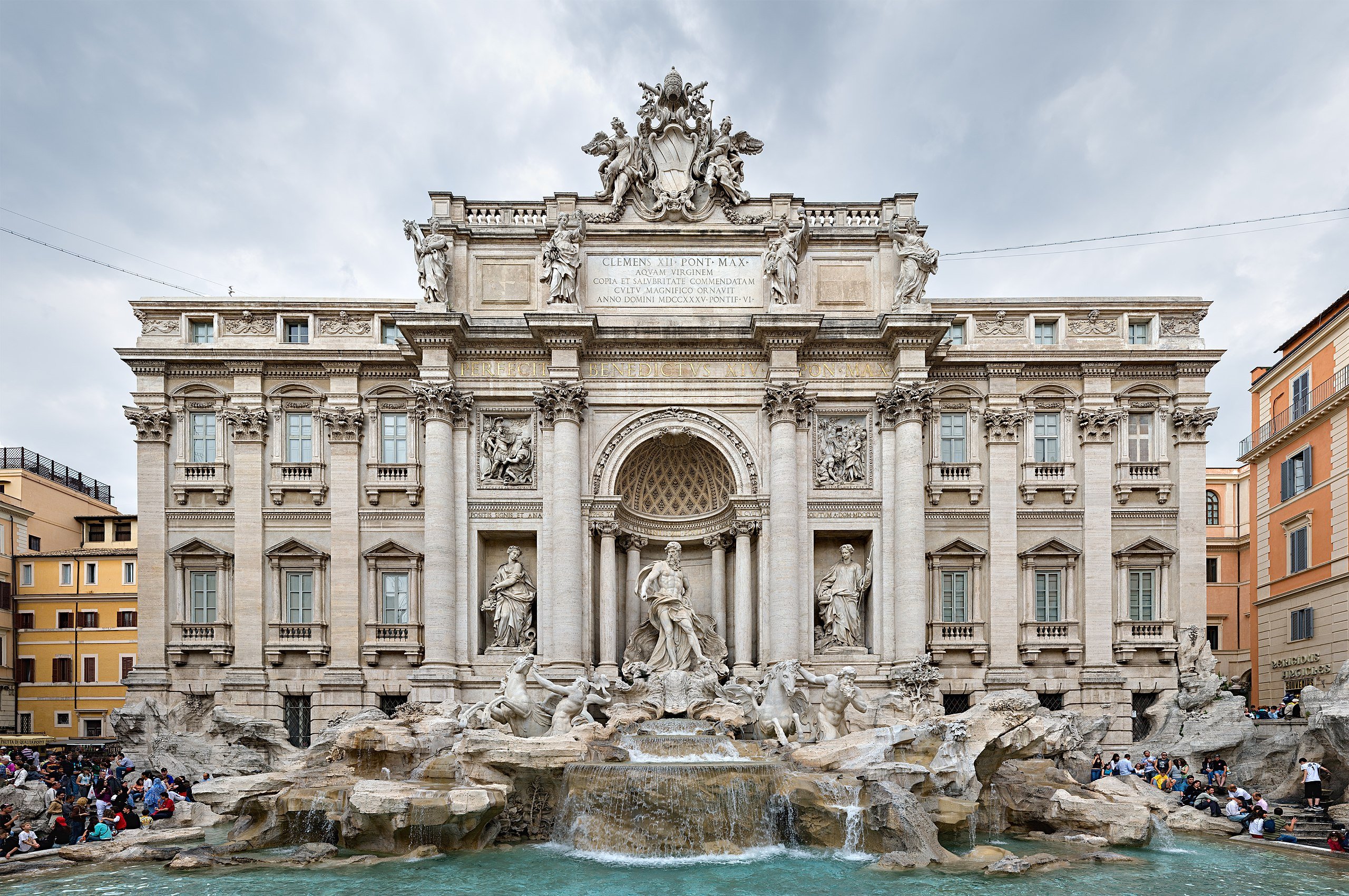
Locals and tourists gathered around Rome’s iconic Fontana di Trevi on Monday to witness the first flow of water in 16 months after the fountain’s €2.18 million ($2.98 million) restoration has come to completion.
Throughout the restoration period visitors were forced to admire the scaffolding-covered landmark from a specially constructed walkway. The fountain’s basin was drained while essential repairs were being carried out, denying tourists from witnessing the spectacle of the historic waterworks in full flow.
The construction work also caused an unexpected invasion. In July, at the height of the tourist season, the Baroque monument became infested with rats.
Funded by the luxury fashion house Fendi, the local company agreed to pay for the crumbling fountain’s crucial maintenance in exchange for the right to affix a branded plaque next to the tourist magnet for four years.
During restoration, the Trevi Fountain was obscured by scaffolding, and accessible by a walkway. Photo by Fendi for Fountains.
“It’s very emotional, especially for us Romans,” the luxury brand’s designer Silvia Venturini Fendi, told Agence France Presse at the reopening of the famous site. Fendi CEO Pietro Beccari agreed to fund the restoration as a “gesture of love” to Rome.
The state of disrepair of the 300-year-old monument culminated in 2012 when pieces of the fountain’s ornamental cornice started crumbling after an unusually cold winter.
The €320,000 ($349,465) emergency repairs only revealed more problems requiring urgent maintenance, forcing the cash-strapped local government to turn to the city’s local businesses for funding.
Luxury fashion house Fendi stepped in to provide the $2.2 million to renovate the historic monument that is the Trevi Fountain. Photo by Fendi for Fountains.
Italy’s luxury fashion industry is practically keeping its cultural industry afloat. Jeweler Bulgari funded the restoration of Rome’s Spanish Steps and shoemaker Tod’s is funding the restoration of the city’s Roman Colosseum.
Meanwhile in Florence, Salvatore Ferragamo donated €600,000 towards for the restoration of the Uffizi Gallery, and Gucci contributed €340,000 towards the restoration of a series of ten 16th century tapestries, while fashion tycoon Renzo Rosso funded the refurbishment of Venice’s Rialto Bridge.